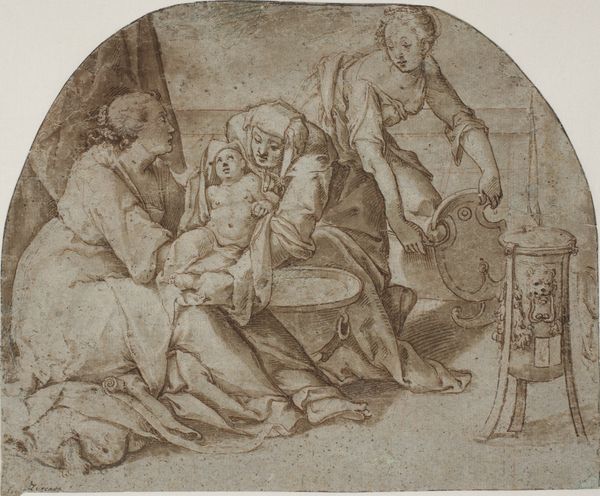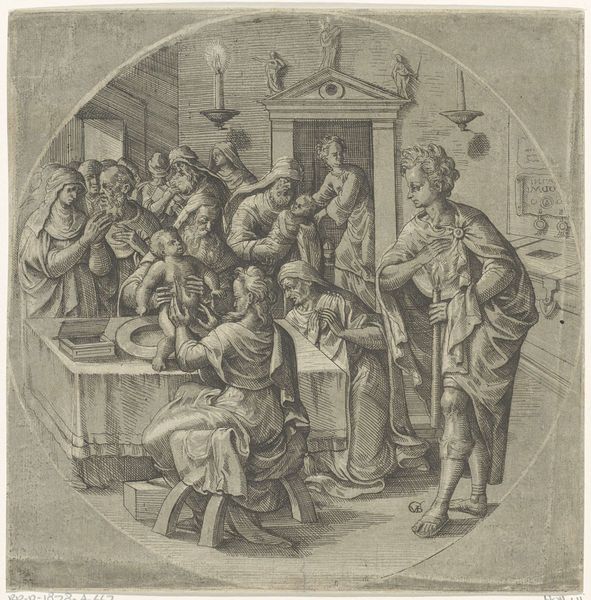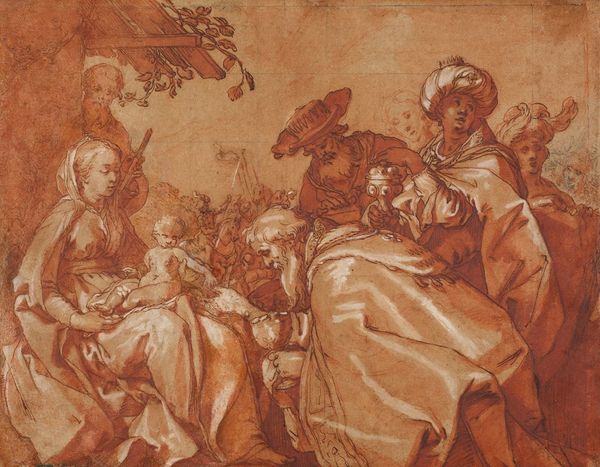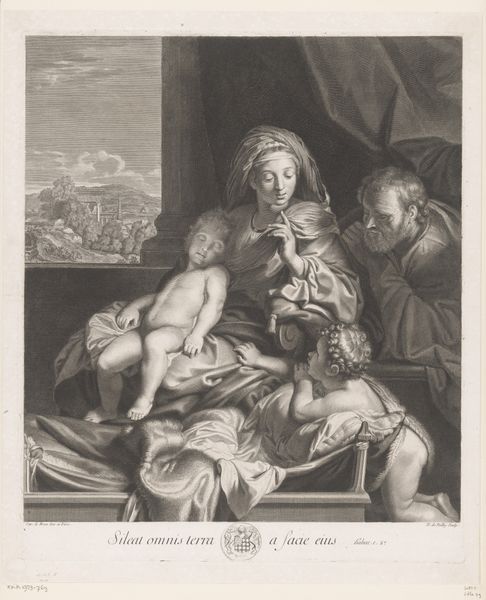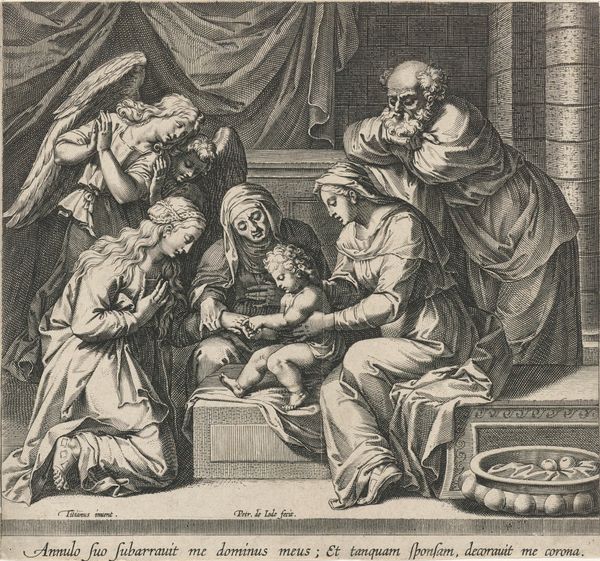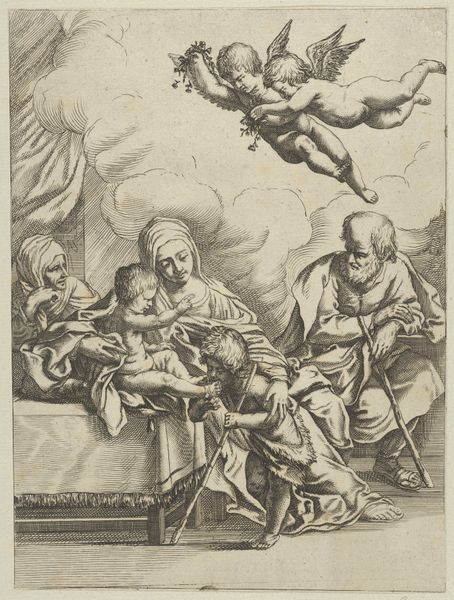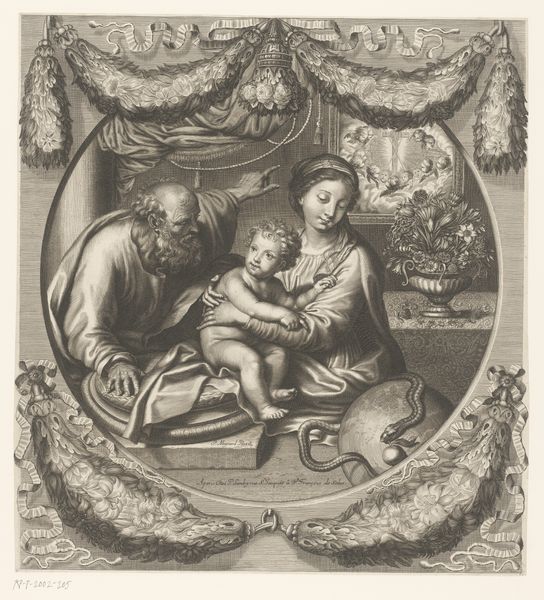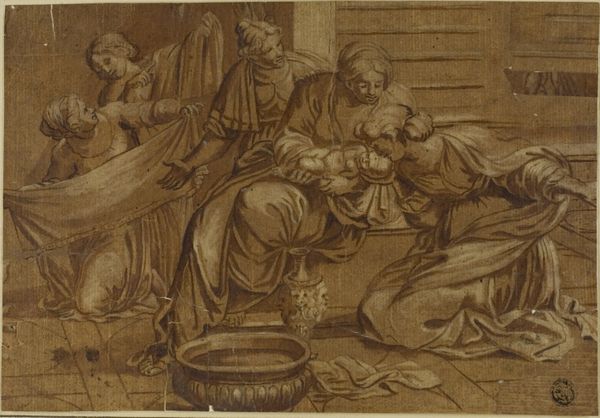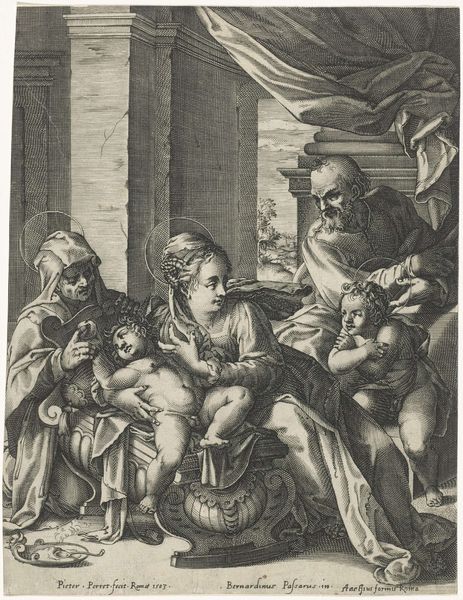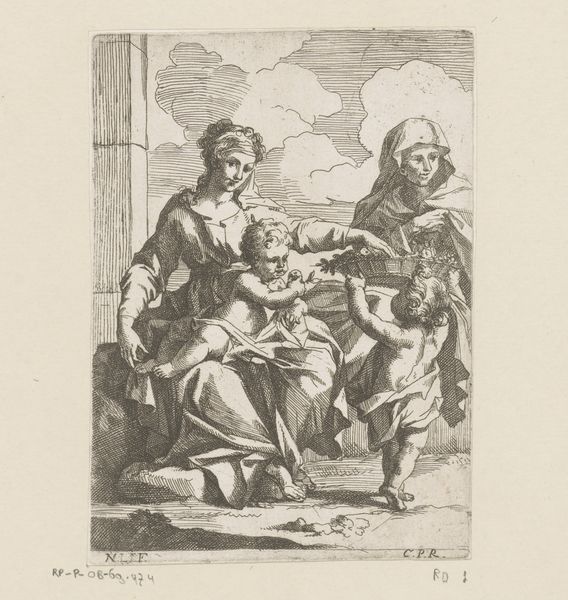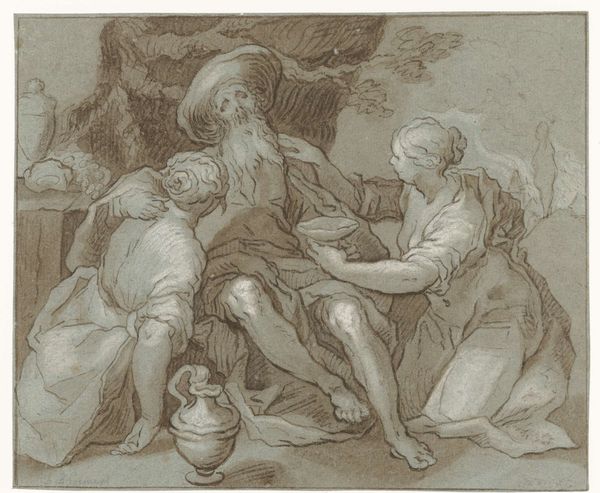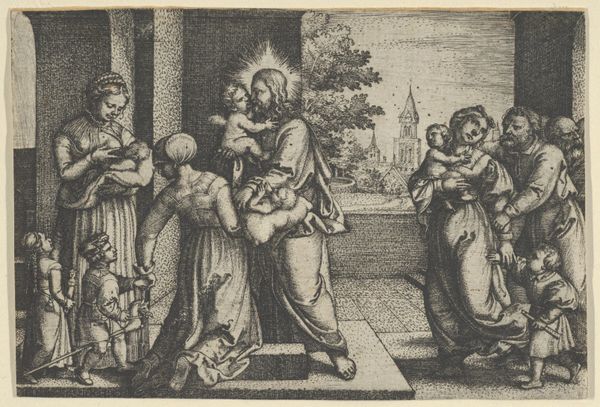
painting, oil-paint
#
portrait
#
character portrait
#
baroque
#
dutch-golden-age
#
painting
#
oil-paint
#
child
#
group-portraits
#
genre-painting
Dimensions: support height 133 cm, support width 92 cm, outer size depth 11.5 cm
Copyright: Rijks Museum: Open Domain
Curator: Thomas de Keyser painted this group portrait, entitled “Portrait of Three Children and a Man,” likely between 1622 and 1628. You can find it here at the Rijksmuseum. Editor: My first impression is one of slightly unsettling luxury. The velvet, the globe, the jewellery… but the barefoot children create such a stark contrast. Curator: It's the juxtaposition of innocence and worldly wealth, isn't it? Consider the globe, a symbol of worldly power and exploration, rendered almost as a toy for the youngest child. De Keyser plays with this tension throughout the painting, hinting at the transient nature of earthly possessions versus the enduring spirit of childhood. Editor: Absolutely. The presence of the man looking down from behind gives this composition a weird perspective. It almost looks like a painted surface was layered with cut outs. Then you’ve got that tantalizing glimpse into another room through what looks like another framed artwork in the back of the painting. A portrait of a portrait within a portrait! The children also appear strangely disconnected from one another in how their skin seems to sit uncomfortably next to each other in pictorial space. Curator: He's intentionally distancing himself, though—literally elevated, peering down with an ambiguous expression. But, his very presence frames the children as if they were items of his collection, which raises ethical implications. There is the inclusion of a miniature painting depicting what appears to be a Venus and Adonis scene as well, indicating his worldliness. Editor: True, but look at the oil paint itself, layered so precisely to achieve these textures! The man’s dark velvet cloak, how the pigment has been blended to catch the light just so. And compare it to the simple cloth draped across the baby! There’s such deliberate variation. I wonder about De Keyser's workshop practices; it would be revealing to examine what studio assistance might have enabled this work. Curator: A great observation! These portraits, in general, aimed to portray wealth and standing. However, the bare feet can signify different concepts –from humility to classical allusions that reference vulnerability and, in a way, mortality, because, eventually, they will no longer have this. Editor: So, this image operates at different economic and symbolic registers. De Keyser delivers his patrons both the appearance of social position, but delivers an understated image about this power’s place in temporality. Curator: In the end, de Keyser masterfully uses symbols to explore family dynamics and the passage of time. Editor: A work of exquisite material construction and intriguing thematic ambiguities.
Comments
No comments
Be the first to comment and join the conversation on the ultimate creative platform.
